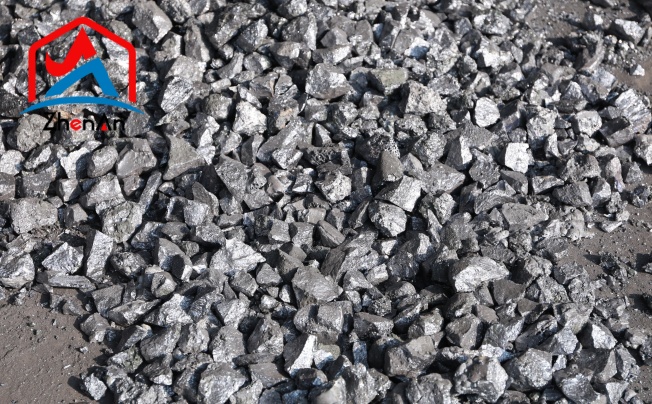Silica and talc are two minerals that have gained significant attention due to their diverse industrial applications and presence in various consumer products. Understanding the differences between these minerals is crucial, as it allows us to comprehend their unique properties, characteristics, and uses.
Overview of Talc
Chemical Composition and Structure
Talc, scientifically known as magnesium silicate hydroxide, is a hydrous silicate mineral. Its chemical composition comprises three elements: magnesium, silicon, and oxygen. The formula for talc is Mg3Si4O10(OH)2. This composition gives talc its unique physical and chemical properties. Structurally, talc belongs to the phyllosilicate group of minerals, characterized by the arrangement of its crystal lattice. It forms thin sheets or platelets that are stacked together in layers.
Natural Sources and Geological Formation Processes
Talc is primarily sourced from metamorphic rocks that have undergone alteration due to heat and pressure deep within the Earth's crust. These rocks can include dolomite, serpentine, or ultramafic rock formations. These rocks are transformed over long periods through processes like regional metamorphism or contact metamorphism. The talc formation begins when magnesium-rich rocks such as dolomite come into contact with hydrothermal fluids containing silica. The interaction between these components leads to a series of chemical reactions resulting in the formation of talc deposits. These deposits typically occur in foliated or layered structures within specific geological settings like fault zones or shear zones.
Key Differences Between Silica and Talc
- Composition
Silica, also known as silicon dioxide (SiO2), is a compound composed of one silicon atom bonded with two oxygen atoms. It is an abundant mineral found in various forms, such as quartz, cristobalite, and tridymite.
On the other hand, talc (Mg3Si4O10(OH)2) belongs to the group of phyllosilicates and consists of magnesium (Mg), silicon (Si), oxygen (O), and hydroxyl groups (OH). The chemical composition of silica renders it a pure form of silicon dioxide, while talc is a hydrated magnesium silicate.
The difference in composition between silica and talc results in contrasting physical properties. Silica has a higher melting point than talc due to its strong bonding structure formed by the sharing of electrons between silicon and oxygen atoms. This grants silica exceptional heat resistance, making it suitable for applications involving high temperatures, such as glass manufacturing or refractory materials used in furnaces. In contrast, talc possesses a lower melting point due to the presence of hydroxyl groups that weaken its molecular structure.
- Crystal Structure
Silica possesses a well-defined crystalline structure characterized by its three-dimensional arrangement of atoms. In its most common form, quartz exhibits a hexagonal crystal system with repeating patterns and uniformity across the crystal lattice. This atomic arrangement gives rise to various physical properties like transparency or translucency depending on impurities present within the crystal structure.
Conversely, talc lacks a defined crystal structure and is classified as amorphous. It occurs in nature as fine-grained masses with no long-range order or repeating patterns at the atomic level. Talc's amorphous nature contributes to its characteristic softness since there are no specific planes within its structure where cleavage can occur. This softness makes talc an ideal mineral for use in cosmetics or powders where it provides smoothness without abrasiveness.
Properties and Characteristics Comparison
Physical Properties
- Color
When comparing the physical properties of silica and talc, one notable difference lies in their respective colors.
Silica, typically found in its most common form as quartz, exhibits remarkable transparency. In its purest and crystalline state, silica appears as a clear, colorless mineral, allowing light to pass through with little obstruction.
On the other hand, talc possesses a different physical appearance due to impurities present in its composition. It manifests as a white to greyish-white mineral with a powdery texture. The unique coloration of talc can be attributed to the presence of trace elements such as iron or carbonates that are typically found within the geological formations where it originates. While not transparent like silica, talc's distinct hue has made it popular in industries ranging from cosmetics to ceramics.
- Hardness
Another significant disparity between silica and talc lies in their hardness levels according to the Mohs scale of mineral hardness.
Silica demonstrates exceptional hardness due to its crystalline structure and strong atomic bonds.
Quartz, which is composed primarily of silicon dioxide (SiO2), ranks at 7 on the Mohs scale – making it significantly harder than most minerals commonly encountered in everyday life. In contrast, talc possesses relatively low hardness compared to silica. With a Mohs rating of 1 on the scale, it is one of the softest minerals known. Talc's softness makes it easily malleable and lends itself well for use in applications requiring smoothness and lubrication properties.
Chemical Properties
- Resistance to Acids/Alkalis
Silica demonstrates remarkable resistance to both acidic and alkaline environments owing to its chemical composition. Silicon dioxide (SiO2), which forms most types of silica minerals including quartz, exhibits stability even when exposed to strong acids or alkalis. This inherent resistance has led many industries such as electronics manufacturing and chemical processing to utilize silica-based materials as protective coatings or components that can withstand corrosive conditions.
In contrast, despite being chemically stable under normal circumstances, talc is more susceptible than silica when exposed to acids or alkalis with higher concentrations or extreme pH levels. Its susceptibility arises from the presence of magnesium silicate hydroxide (Mg3Si4O10(OH)2) within its structure – an arrangement that lacks sufficient chemical bonds necessary for substantial resistance against corrosive agents.
- Thermal Stability
Silica exhibits exceptional thermal stability due to its strong atomic bonds within a rigid crystal lattice structure formed by silicon dioxide molecules. This property enables silica-based materials like quartz glass or high-temperature ceramics made from fused quartz crucibles capable of enduring extreme heat without losing their structural integrity or undergoing significant deformation. Conversely, while talc generally retains stability at moderate temperatures encountered under normal conditions, it possesses lower thermal tolerance compared to silica-based materials due to weaker intermolecular forces between its layers caused by van der Waals interactions.
Common Uses and Applications Comparison
Silica plays an indispensable role in the glass manufacturing industry, serving as a fundamental component in the production process. Its unique properties make it a perfect choice for creating various types of glass. The high silica content, typically around 70-75%, provides stability and strength to the resulting material.
When mixed with other ingredients like soda ash and limestone, silica forms a glass melt that can be shaped into different forms such as bottles, windows, and mirrors. One of the reasons silica is favored for glass production is its ability to withstand high temperatures without losing its integrity.
This quality ensures that the final product can withstand extreme temperature changes without cracking or breaking. Additionally, silica's chemical composition enhances the transparency of glass by allowing light to pass through with minimal distortion, making it suitable for applications where optical clarity is crucial.
In addition to traditional glass applications, silica-based glasses are also extensively used in specialized sectors. For instance, fused silica or quartz glass finds application in high-performance optics such as lenses for lasers or ultraviolet (UV) filters due to its exceptional transmission properties within specific wavelengths.






